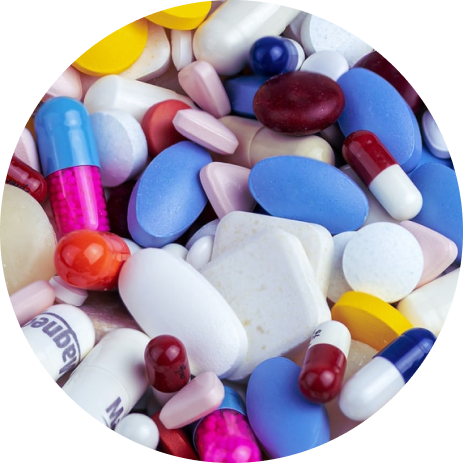What is Ovulation Induction?
Ovulation tracking or induction is often a first step to help women achieve pregnancy who may not be ovulating or are experiencing cycles that are highly irregular. Some prior initial tests will be performed to check if you are ovulating. Your fertility specialist may also check if you have open (patent) fallopian tubes and if your male partner has a normal semen analysis.
Ovulation Induction helps improve the timing of intercourse (and therefore probability of achieving pregnancy) by using medication to help your cycle. We monitor the cycle with blood tests and ultrasounds to choose the right moment for intercourse and then hopefully, conception.

Most common medications used in Ovulation Induction:
01
Letrozole
Letrozole is most commonly used if a woman is not ovulating and consequently has irregular or long menstrual cycles. This is commonly seen in the setting of polycystic ovarian syndrome (PCOS). Its mode of action is to block the enzyme that converts testosterone to estrogen therefore prompting the brain to release more FSH (Follicle Stimulating Hormone). Inside the follicle is the egg so by promoting the growth of the follicle it will hopefully reach the size needed to trigger ovulation.

02
Follicle Stimulating Hormone (FSH)
Hormone injections of FSH can be used when the patient does not ovulate or the use of letrozole has not been successful or is contraindicated. There are some conditions where a patient’s brain does not produce FSH (or LH) and so they need to be given as replacement injections to help a follicle grow. Ideally the aim is to have only one follicle or at maximum two follicles grow to avoid the risk of multiple pregnancy. The follicles produce oestrogen which helps prepare the uterine environment for an embryo. Then a second injection called a ‘trigger’ helps the body to ovulate and we know exactly when to suggest a couple has intercourse to give the best chance of success.

Reasons for using OI
- Ovulation problems
- To help couples with timing of intercourse
- In younger couples with unexplained infertility: in this situation the treatment should be referred to as super-ovulation, not ovulation induction (as they already ovulate) and the aim is to have 2 follicles develop to increase chances above natural conception.
What happens when you are undergoing an OI cycle?
While you are undergoing this type of cycle you will be monitored very closely with ultrasounds and/or blood tests to check the number and size of follicles developing, this is essential to reduce the risk of a multiple pregnancy. If there is a risk of multiple pregnancy your fertility specialist might recommend to cancel this cycle and will discuss other options.
It is important to time the sperm meeting the egg perfectly, just as it would need to achieve fertilisation and conceive in natural pregnancy. It is important to bear in mind that once an egg ovulates it will live for 12 hours (maybe up to 18 hours) unless it is fertilised and sperm lives for 2-3 days (maybe even up to 5 days). So ideally it is best to have sex just prior to ovulation.
Ovulation cycle tracking is a simple process that can help you identify which days you’re most fertile
